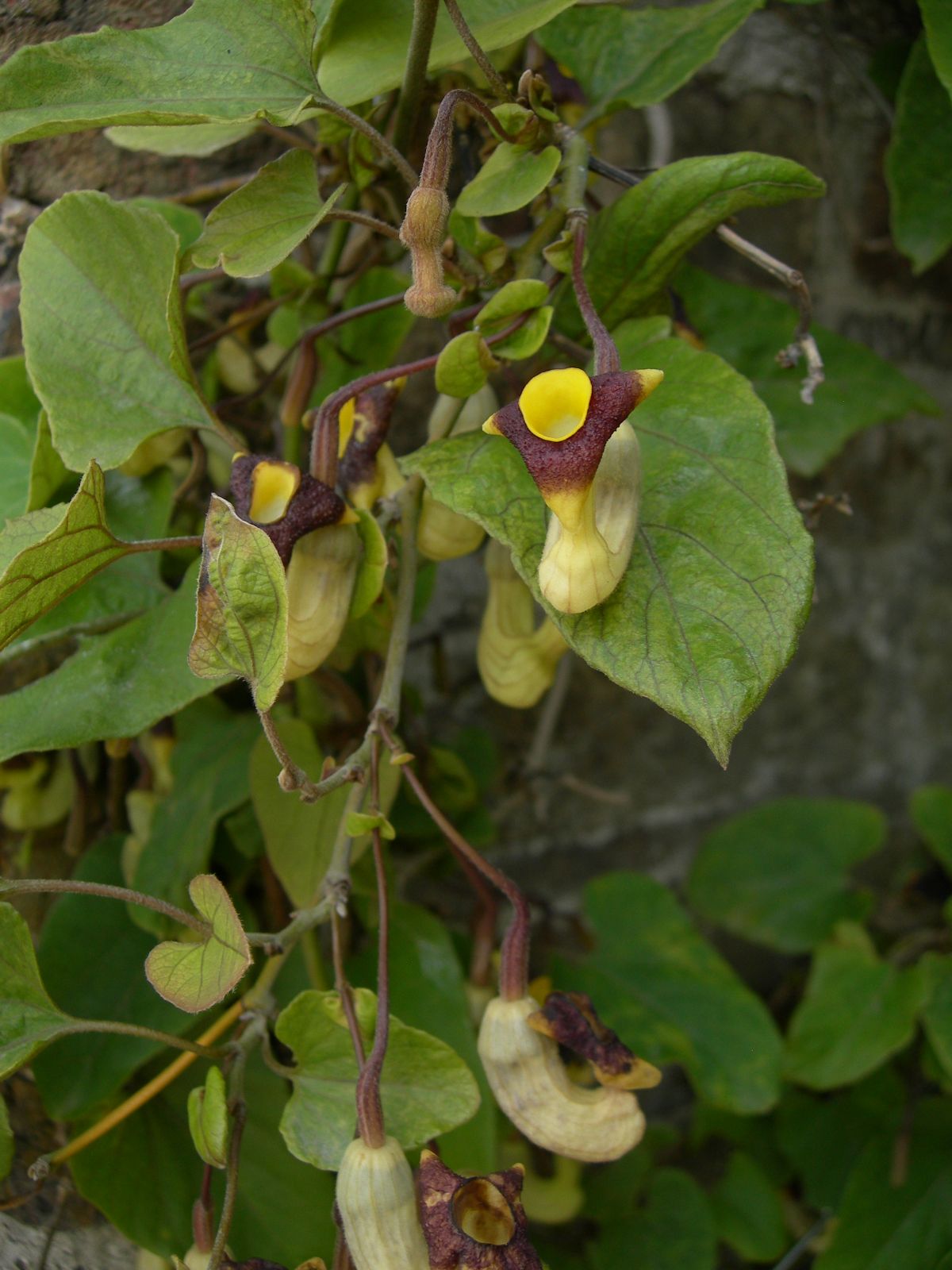Aristolochia heterophylla
Credits
Article from Bean's Trees and Shrubs Hardy in the British Isles
Recommended citation
'Aristolochia heterophylla' from the website Trees and Shrubs Online (treesandshrubsonline.
Genus
A rambling or climbing, half-woody, deciduous shrub, whose young shoots and leaves are covered with fine down; buds hairy. Leaves narrowly to broadly ovate, with a heart-shaped base, or sometimes with a shallow or prominent rounded lobe at each side near the base; pointed, 11⁄2 to 4 in. long, 3⁄4 to 2 in. wide, dull green; leaf-stalk 1⁄2 to 1 in. long. Flowers solitary on almost glabrous stalks 11⁄2 to 2 in. long, which spring from the leaf-axils singly or in pairs, and are furnished near the base with a leaf-like, heart-shaped bract. The flower has the typical ‘Dutchman’s pipe’ shape characteristic of the genus, the tube being about 2 in. long, yellow, downy, the terminal part sharply curved upwards; the orifice is 1⁄4 in. in diameter, bright yellow inside. The spreading part of the flower is lurid purple, almost black, the lower lobe rounded, the two side ones given a pointed shape by the curling back of the margins. Flowers in June. Fruit 2 to 21⁄2 in. long, 1 in. wide, six-ribbed.
Native of W. China; introduced by Wilson for Messrs Veitch in 1904. It was quite hardy in the Coombe Wood nursery at Kingston-on-Thames. The flowers are pretty and striking, and the plant a decided curiosity.

